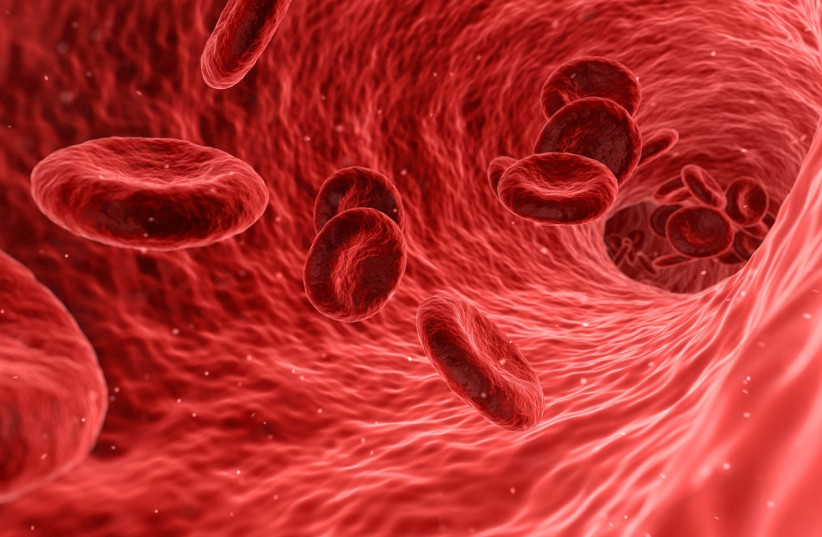Having iron buildup in the brain may result in people having a higher risk in developing movement disorders like Parkinson's disease, according to a new study.
This iron buildup itself is cased by a genetic disorder called hereditary hemochromatosis, itself caused by a genetic mutation.
The findings of this study were published in the peer-reviewed academic journal JAMA Neurology.
<br>Background: Hereditary hemochromatosis overloading on iron
Before explaining hereditary haemochromatosis, it's important to understand the role of iron in the human body.
Iron is an essential mineral that the body needs to function, and it is especially prevalent in the human blood.

This, in turn, is why the level of iron in the body must be balanced and controlled. The exact amount of iron needed in the body can vary, but it usually tends to be just 4-5 grams of iron, with 2.5 being used to bring oxygen in the blood and the rest being used in cells throughout the body, especially the liver, spleen and bone marrow - the former of which is where the primary iron reserve storage.
Much research has already been conducted on what happens when iron levels in the body are too low, which is known as iron deficiency, something that is generally more common among those who menstruate due to the loss of blood.
Further, there is also a significant amount of research that has been done on how to compensate for this, which can be done in the form of iron supplements or making sure one's diet contains a necessary amount of iron.
And, indeed, food is the main source of iron.
But less well-known, especially among the general public, is that it is also possible for the body to have too much iron, which is known as iron overload or hemochromatosis.
This can happen in a few days, such as repeated blood transfusions, too much dietary iron or too many iron supplements.
But hereditary hemochromatosis is the most well-known means for this to happen.
This condition is genetic and is linked to a specific gene, the HFE gene, and is most common among those of Celtic descent. Both parents would need to have the gene for it to manifest as the condition, similar to other genetic conditions like Tay-Sachs disease.
Hereditary hemochromatosis essentially causes the body to absorb far too much iron from food, increasing the amount of iron in the body.
Unlike iron deficiencies, which can be solved by simply having more iron, iron overloads are harder to solve because humans don't actually have a way to release the excess iron outside of menstruation and pregnancy.
In fact, the ability of menstruation and pregnancy to release excess iron from the body is why symptoms appear in people who menstruate much later than in others, really only appearing after menopause.
However, symptoms tend to appear late across the board, with males on average only showing symptoms after the age of 40 and females after the age of 60, according to the Mayo Clinic.
When undergoing iron overload, the iron will accumulate in the body, often in the liver, skin, heart, thyroid, pituitary gland and more.
This, in turn, is linked to numerous other symptoms and diseases. These include, but are not limited to:
- Joint and abdominal pain
- Liver cirrhosis
- Liver cancer
- Arthritis
- Diabetes
- Severe fatigue and weakness
- The skin turning a bronze or gray color
- Abdominal pain
- Lack of sex drive
- Liver failure
- Heart failure
- Erectile dysfunction and sexual impotence
- Memory fog
Considering how many of these conditions can be life-threatening, treating hereditary hemochromatosis is very important.
And treatment is possible since really any iron overload can simply be prevented by getting a phlebotomy (essentially bloodletting, just safely getting rid of blood in comparable amounts to a blood donation) on a regular periodic basis - sometimes just a couple of times a year.
Of course, medications also exist, and diets used to limit iron intake can help as well.
But aside from all the aforementioned health issues, it is possible that hereditary hemochromatosis has other ramifications that have hitherto gone unnoticed. In particular, some researchers have previously suggested that the brain may be unaffected by hereditary hemochromatosis and its subsequent iron overload.
<br>The study
To see if hereditary hemochromatosis and the subsequent iron overload had an impact on the brain, the researchers studied data gathered by the UK Biobank.
Overall, the sample size consisted of 488,288 individuals.
With that in mind, it was time to see if the people with two copies of the HFE gene mutation, meaning they would have hereditary hemochromatosis, had iron buildup in the brain in the areas that were responsible for movement.
And overall, the answer seems to be yes, with substantial iron deposits found in the brain's motor circuits.
The researchers concluded that the iron buildup in the brain was linked to a higher risk of developing movement disorders. For instance, the iron buildup could cause the brain to lose nerve cells that produce dopamine, which in turn can cause Parkinson's disease.
But interestingly, the increased risk for movement disorders were only present in males. However, this isn't too surprising, as the iron buildup in males will almost always be more severe due to the lack of mensuration.
These findings hold implications for the further extent of how hereditary hemochromatosis and iron overload can impact the body and how it can lead to movement disorders. But even more importantly, the importance of the findings for medical purposes are especially notable because they can be applied immediately - after all, the safe and approved treatments for iron overload already exist.
